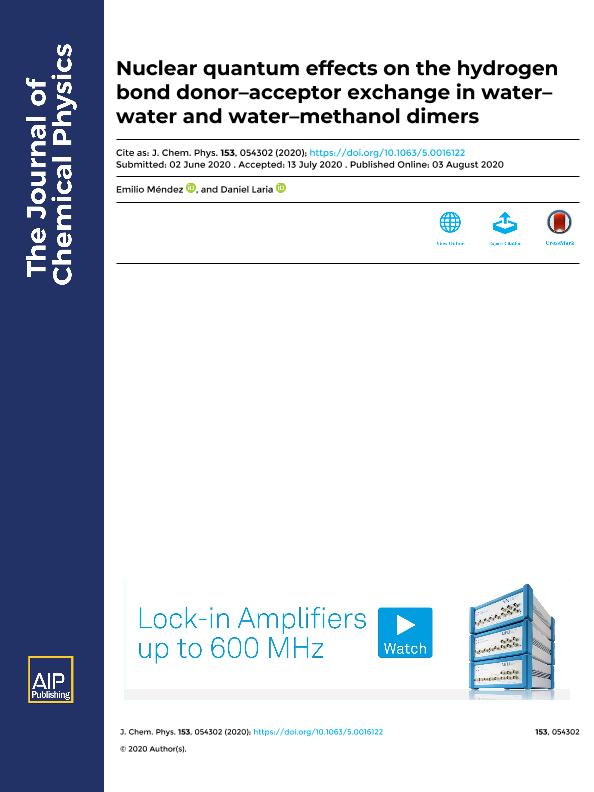Artículo
Nuclear quantum effects on the hydrogen bond donor-acceptor exchange in water-water and water-methanol dimers
Fecha de publicación:
07/2020
Editorial:
American Institute of Physics
Revista:
Journal of Chemical Physics
ISSN:
0021-9606
Idioma:
Inglés
Tipo de recurso:
Artículo publicado
Clasificación temática:
Resumen
We present results from path integral molecular dynamics simulations that describe effects from the explicit incorporation of nuclear quantum fluctuations on the topology of the free energy associated with the geared exchange of hydrogen bonds in the water–water dimer. Compared to the classical treatment, our results reveal important reductions in the free energy barriers and changes at a qualitative level in the overall profile. Most notable are those manifested by a plateau behavior, ascribed to nuclear tunneling, which bridges reactant and product states, contrasting with the usual symmetric double-well profile. The characteristics of the proton localizations along the pathway are examined. An imaginary time analysis of the rotational degrees of freedom of the partners in the dimer at the vicinities of transition states shows a clear “anticorrelation” between intermolecular interactions coupling beads localized in connective and dangling basins of attractions. As such, the transfer is operated by gradual concerted inter-basin migrations in opposite directions, at practically no energy costs. Modifications operated by partial deuteration and by the asymmetries in the hydrogen bonding characteristics prevailing in water–methanol heterodimers are also examined.
Palabras clave:
Integrales de camino
,
nanoagregados acuosos
,
efectos cuanticos nucleares
Archivos asociados
Licencia
Identificadores
Colecciones
Articulos(INQUIMAE)
Articulos de INST.D/QUIM FIS D/L MATERIALES MEDIOAMB Y ENERGIA
Articulos de INST.D/QUIM FIS D/L MATERIALES MEDIOAMB Y ENERGIA
Citación
Méndez, Emilio; Laria, Daniel Hector; Nuclear quantum effects on the hydrogen bond donor-acceptor exchange in water-water and water-methanol dimers; American Institute of Physics; Journal of Chemical Physics; 153; 5; 7-2020; 54302-54302
Compartir
Altmétricas




